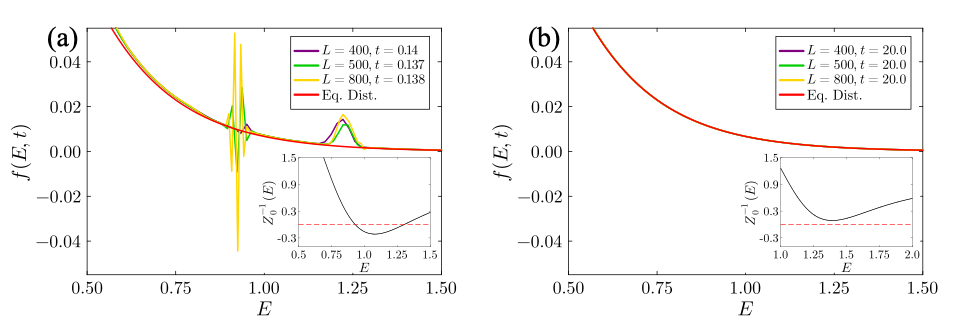주메뉴
- About IBS 연구원소개
-
Research Centers
연구단소개
- Research Outcomes
- Mathematics
- Physics
- Center for Underground Physics
- Center for Theoretical Physics of the Universe (Particle Theory and Cosmology Group)
- Center for Theoretical Physics of the Universe (Cosmology, Gravity and Astroparticle Physics Group)
- Dark Matter Axion Group
- Center for Artificial Low Dimensional Electronic Systems
- Center for Theoretical Physics of Complex Systems
- Center for Quantum Nanoscience
- Center for Exotic Nuclear Studies
- Center for Van der Waals Quantum Solids
- Center for Relativistic Laser Science
- Chemistry
- Life Sciences
- Earth Science
- Interdisciplinary
- Center for Neuroscience Imaging Research (Neuro Technology Group)
- Center for Neuroscience Imaging Research (Cognitive and Computational Neuroscience Group)
- Center for Algorithmic and Robotized Synthesis
- Center for Genome Engineering
- Center for Nanomedicine
- Center for Biomolecular and Cellular Structure
- Center for 2D Quantum Heterostructures
- Institutes
- Korea Virus Research Institute
- News Center 뉴스 센터
- Career 인재초빙
- Living in Korea IBS School-UST
- IBS School 윤리경영


주메뉴
- About IBS
-
Research Centers
- Research Outcomes
- Mathematics
- Physics
- Center for Underground Physics
- Center for Theoretical Physics of the Universe (Particle Theory and Cosmology Group)
- Center for Theoretical Physics of the Universe (Cosmology, Gravity and Astroparticle Physics Group)
- Dark Matter Axion Group
- Center for Artificial Low Dimensional Electronic Systems
- Center for Theoretical Physics of Complex Systems
- Center for Quantum Nanoscience
- Center for Exotic Nuclear Studies
- Center for Van der Waals Quantum Solids
- Center for Relativistic Laser Science
- Chemistry
- Life Sciences
- Earth Science
- Interdisciplinary
- Center for Neuroscience Imaging Research (Neuro Technology Group)
- Center for Neuroscience Imaging Research (Cognitive and Computational Neuroscience Group)
- Center for Algorithmic and Robotized Synthesis
- Center for Genome Engineering
- Center for Nanomedicine
- Center for Biomolecular and Cellular Structure
- Center for 2D Quantum Heterostructures
- Institutes
- Korea Virus Research Institute
- News Center
- Career
- Living in Korea
- IBS School
News Center
New Theory Explains the True Upper Limit of Conventional SuperconductivityA new theoretical study has identified a fundamental kinetic barrier that limits how strongly electrons can couple to lattice vibrations in metals. Because electron–phonon coupling directly controls the superconducting critical temperature in conventional superconductors, this finding places a strict upper limit on how high the critical temperature can rise in phonon-mediated systems. The work was supported in part by the Institute for Basic Science (IBS) in Korea. Hydrogen-rich materials have attracted intense interest in recent years after compounds such as H3S and LaH10 achieved near-room-temperature superconductivity under high pressure. These systems rely on conventional pairing, in which electrons attract by exchanging phonons. In the strong-coupling regime, Migdal–Eliashberg theory generalizes BCS theory and predicts that the critical temperature 𝑇𝑐 grows roughly with the square root of the electron–phonon coupling 𝜆. Within that theoretical framework there is no strict upper limit on 𝜆, and therefore no fundamental bound on 𝑇𝑐. The new study shows that such a bound does exist, but it emerges from nonequilibrium physics rather than equilibrium energetics. When the physical electron–phonon coupling becomes too large, the combined electron–phonon system becomes intrinsically unstable: tiny deviations from equilibrium grow instead of relaxing. Microscopically, this instability appears when the electronic quasiparticle weight 𝑍(𝐸) becomes negative over a finite range of energies. This instability appears before the electronic specific heat becomes negative — indicating that the system loses thermal equilibrium at an even earlier stage. Both are clear indications that electrons and phonons can no longer maintain a stable thermal equilibrium. Importantly, this kinetic instability does not involve phonon softening and is fundamentally different from the polaronic or charge-density-wave instabilities often encountered in simplified electron–phonon models. Because 𝑇𝑐 in phonon-mediated superconductors increases with square root of 𝜆, a limit on 𝜆 becomes a true upper limit on 𝑇𝑐. Translating the kinetic bound into experimental terms produces a ceiling that remains well above room temperature under extreme high-pressure conditions, meaning that very high 𝑇𝑐 values in hydrogen-rich materials are still consistent with fundamental physics. However, the new analysis shows that this route cannot be extended indefinitely. Because this instability emerges at a precise threshold, it provides a strict upper bound on the physical electron–phonon interaction strength — beyond a certain point, attempting to increase 𝜆 does not raise 𝑇𝑐 further but instead destroys the stability of the metallic state. This work helps to clarify why hydrogen-rich hydrides achieve such remarkable critical temperatures, while also indicating where the strong-coupling approach must eventually end. The results provide experimentalists with concrete warning signs—such as changes in quasiparticle weight or electronic specific heat—that signal proximity to the kinetic limit. More broadly, the study offers a realistic map connecting measured coupling strengths to achievable 𝑇𝑐 values, helping to distinguish physically attainable targets from those that lie beyond the boundary set by nonequilibrium stability. Although practical room-temperature superconductors remain a major scientific challenge, this result does not close the door on their discovery. Instead, it establishes the physical boundary of what is possible with electron–phonon pairing alone, while leaving open the possibility that future materials may reach or even exceed these limits through new mechanisms.
Notes for editors
- References
- Media Contact
- About the Institute for Basic Science (IBS) |
| before |
|---|
- Content Manager
- Public Relations Team : Yim Ji Yeob 042-878-8173
- Last Update 2023-11-28 14:20













